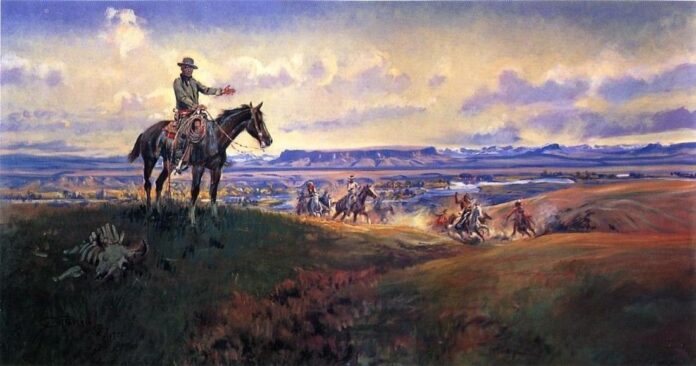Charles M. Russell was a painter, author, sculptor, and storyteller who became known as America’s favorite cowboy artist.
His adoration of the wide open plains, his excitement for western life, and the details he saw while working as a rancher in Montana inspired his works, which perfectly encapsulated the essence of the West.
His Early Years
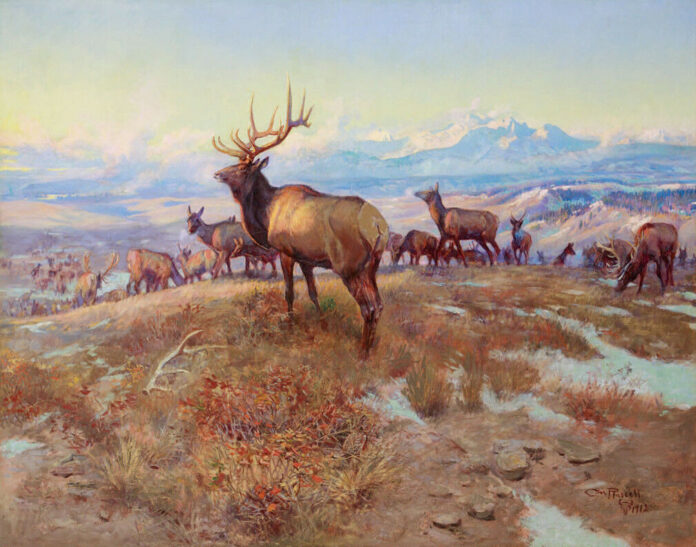
Russell was born in Missouri in March of 1864, close to the growing population of the western frontier. He developed his own ideas of the American West by decorating his school books as a child with pictures of Native Americans and cowboys.
His father owned a Firebrick and Tile Company, and his family was well-known in St. Louis. Charlie Marion Russell was not interested in carrying on the family business as his father had hoped. He had always fantasized about living the incredibly quick cowboy life and spending his days on the range.
He devoted hours to reading about the Old West, focusing on the explorers and traders who traveled through Missouri. Then, he went to Judith Basin in Central Montana at 16 to try to make it as a wrangler.
He arrived in Montana sometime before age 16 and worked as a rancher for the next eleven years. Then, finally, Russell could achieve his goal of being a cowboy and wrangler. However, he didn’t give up his life as a cowboy until he was 29 years old in 1893, when he turned full-time to art. He sketched in his free time and quickly became known as a painter in the community.
His in-depth knowledge of outdoor living and firsthand ranching experience contributed to the distinctive realism that was a defining characteristic of his works.
Russel’s Relationship with the Northern Plains Indians (His Most-Loved Western Subjects)
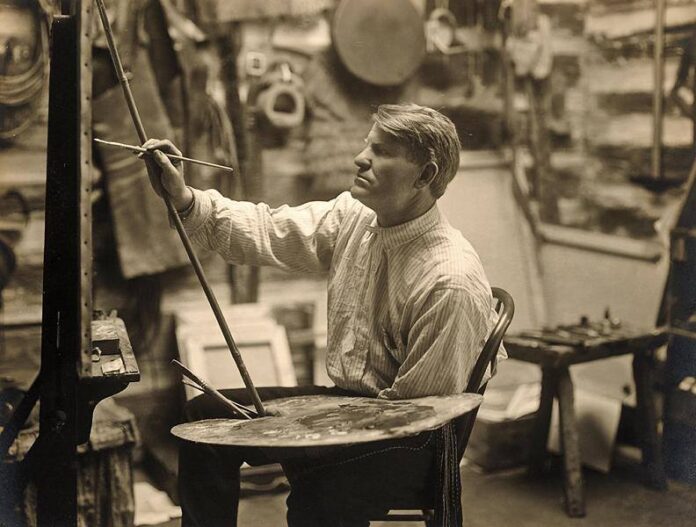
Western artist Charles Russell resided close to Blood Indian camps and the Blackfoot, Piegan, in 1888 while serving as a wrangler and rancher in Alberta, Canada. He grew to appreciate them and was moved to produce numerous intricate works of art that perfectly captured the way of existence of the Northwestern Plains Indians.
Many of Russel’s works were inspired by Northern Plains Indian ladies in particular. They frequently appeared in his paintings riding triumphantly on horses, and-interestingly- he always treated them with the same respect as the beloved Indian warriors.
Artist Charles Russell from America held political ideas ahead of his time, advocating for the rights of those persecuted in the American West, such as women and members of the First Nations.
The Legendary Russell and the American West
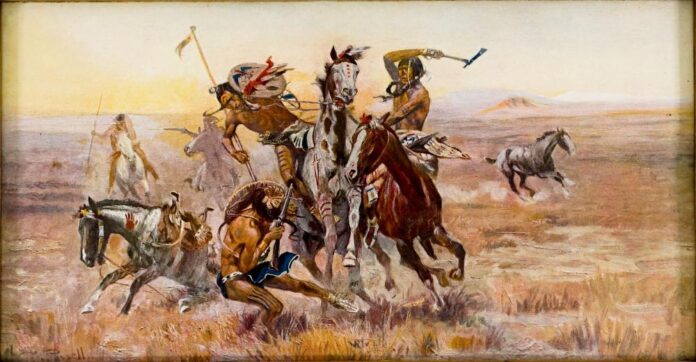
The many cultures and vast geography of the American West give it a unique majesty. Charles Russell is regarded as one of the greatest Western artists to portray this unique majesty. In both popular culture and the visual arts, tales and depictions of the American West from the late 19th and early 20th centuries fascinatingly blend fact and fiction.
In fact, historians had already predicted the death of the West when Russell depicted it. Russell’s Old West paintings combine nostalgia with tight narrative emphasis. Viewers see Western customs and qualities as Russell intended.
Western artist Charles Russell career began with his first trip to the West in 1880. With scenes of cowboy exploits and American Indian hunts, Charles Russell’s paintings captured the beauty and glamour of reality in the old Wild West. However, in contrast to the nuanced, complex, and occasionally lawless and dishonorable nature of this period of American history, they portray an idealized, if not glorified, a portion of the Old West.
His unusual realism benefits greatly from Russell’s firsthand experience in the great outdoors and with Native Americans, which has helped him build a solid reputation for meticulous accuracy.
Charles Russell’s Sterling Legacy
During his lifetime, artist Charles Russell produced almost 4,000 pieces of art. For 46 years, his admiration of Montana and the lifestyle he had seen and experienced there influenced both his work and personal philosophy. In addition, his exceptional talent for capturing in paint, ink, waxes, and bronze the individuals and occurrences of his era and place impacted his art, primarily that of a narrator.
He was among the first painters to spend most of his time in the West. Charles Russell established the bar for many Western painters to follow because he was an expert on his topic. One of the artist’s most notable works was the 12 24-foot mural commissioned for the State of Montana, which has been shown there since 1912 as part of the legislative assembly hall.
Lewis and Clark are shown guiding the US Brigade of Discovery westward in this massive painting and meeting up with a band of Indians in Montana’s Flathead Valley. Even though they tended to lay more of a focus on the West’s fauna and residents than its natural surroundings, the list of Charles Russell paintings covered a broad spectrum of topics, featuring Western daily life, historical accounts, and classic cowboy activities.
Charles Russell’s commitment to the Old West before white civilization was forced on it persisted even as he gained fame and praise, earning him the moniker “the soul of the west.”
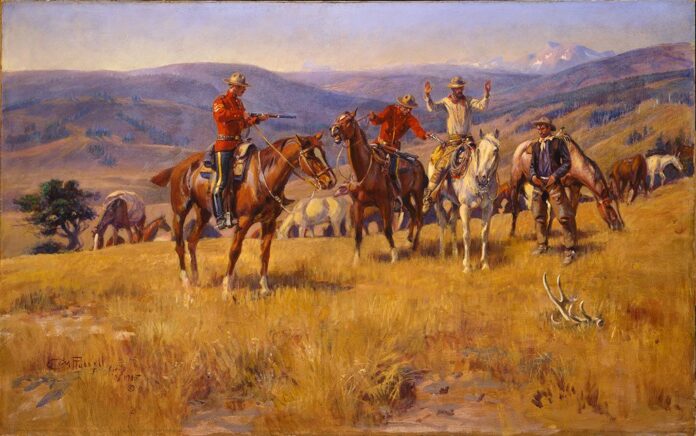
Conclusion
Charles Marion Russell, America’s Cowboy Artist, is known in the art world as a proponent of American Indian traditions, a colorful and distinctive Western artist, and a conservationist of the environment and wildlife. He produced pieces that skillfully captured the energy and inventiveness of the American West. His paintings further reflected his skill as a storyteller.
Russell achieved this by producing a creative visual record that honors Western storytelling, expansive vistas, and stunning wildlife photographs. Yet, even if his art is seen as historical, his spirit lives on. Charles Marion Russell’s creations continue to draw admirers and collectors, earning the departed painter well-deserved praise from the art world.

